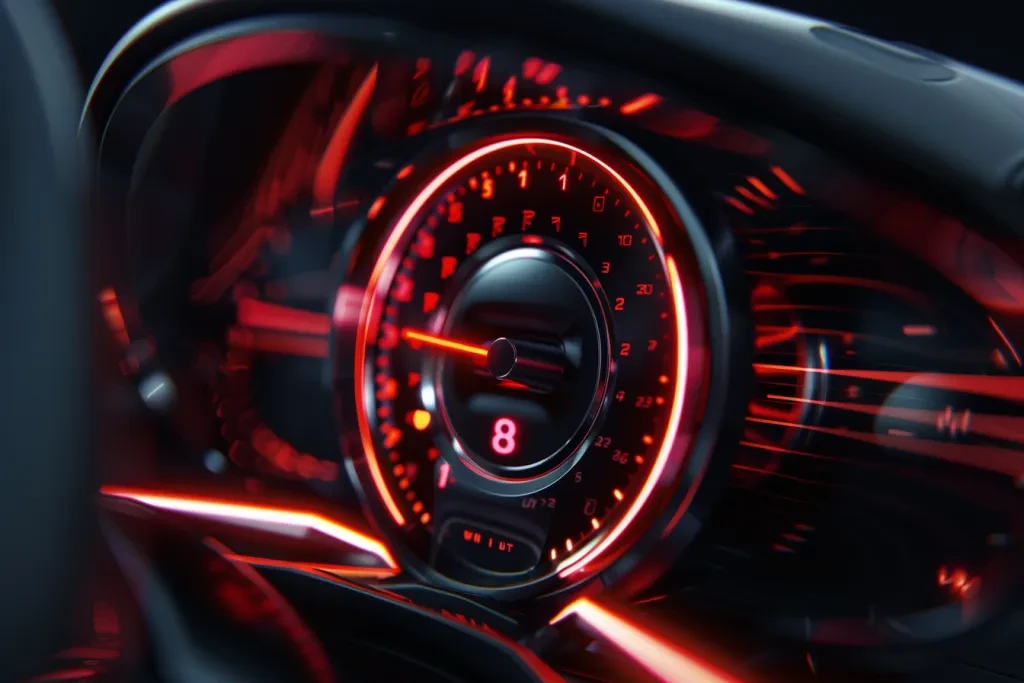
What Does Tachometer Indicate? Shocking Insights Awaiting You!
Share
In the world of automotive and engineering, tachometers play a crucial role in understanding the performance of engines. The question that many tech professionals and enthusiasts often ponder is, 'what does tachometer indicate?' This article dives into the remarkable workings of tachometers, the technology behind them, and the life-changing information they provide to users.
A tachometer is an instrument that measures the rotation speed of a shaft or disk. Generally, it indicates the revolutions per minute (RPM) of an engine. Understanding what this measurement means is essential for professionals in the automotive field and enthusiasts who wish to optimize their vehicles. The tachometer not only helps in monitoring engine performance but also assists in preventing engine damage due to over-revving.

Understanding the Basics of a Tachometer
Tachometers come in various forms, including analog and digital displays. While analog tachometers use a needle that moves on a dial face, digital tachometers provide a numerical display, which can be more straightforward and easier to read. Regardless of the type, the primary function of a tachometer remains the same - to display the engine speed.
In different machinery and equipment, the tachometer can serve various purposes, such as:
- Monitoring Engine Performance: It helps gauge the efficiency of the engine while operating.
- Regulating Fuel Efficiency: Keeping the RPM within optimal ranges can improve fuel economy.
- Preventing Engine Damage: An indication of too high RPM can prevent potential engine failures.
The Technology Behind Tachometers
The technology behind tachometers can vary based on the type in use. For instance, mechanical tachometers often use a flexible shaft driven by the engine, and this rotation is transferred to the tachometer gauge. On the other hand, electronic tachometers utilize sensors that send signals to the display. Both types have their advantages and drawbacks depending on the application.
For a deeper dive into how to connect a tachometer to your engine, you can check out this connection guide. Understanding how to correctly set up and integrate a tachometer with your equipment can significantly enhance engine monitoring.
The Importance of Information Displayed
What can professionals decode from the readings of a tachometer? Here are a few points:
- Performance Optimization: By monitoring RPMs, operators can adjust throttle input to achieve optimal performance.
- Tuning the Engine: Understanding how changes in fuel or air mixtures affect engine speed can lead to effective tuning.
- Identifying Mechanical Issues: Unusual readings can indicate potential mechanical failures or adjustments needed.
The data displayed by a tachometer provides a window into the engine's health. For example, an excessively high RPM can suggest that the engine is working harder than it should, which could lead to premature wear and tear.
How to Read a Tachometer
Reading a tachometer is relatively straightforward, but understanding the implications of those readings is where the real skill lies. Lets break it down:
- Base RPM: Most engines have a base RPM where they operate efficiently, often marked in green on the gauge.
- Redline: This is the maximum RPM the engine can handle before risking damage, usually marked in red.
- Idle Speed: The engine's RPM when its in neutral and not accelerating.
For additional insights and tips on troubleshooting tachometers, refer to this testing guide.
Real-World Applications of Tachometers
Tachometers are not only found in cars, but they are also widely used in many industries. In aviation, for example, they play a vital role in monitoring the rotor speed of helicopters. In manufacturing, they help optimize machine performance. Understanding the utilitarian aspect of tachometers can give tech professionals an edge in various fields.
Common Myths About Tachometers
Many myths surround tachometers that can mislead users. Lets debunk a few:
-
Myth 1: Tachometers are only for performance cars.
Truth: They are essential in various vehicles and machinery. -
Myth 2: Higher RPM always means better performance.
Truth: Optimal RPM varies by engine type and design. -
Myth 3: Tachometers show only the current RPM.
Truth: Some models display a range of data including historical averages.

Future of Tachometers
As technology advances, the future of tachometers is leaning towards even more sophisticated methods of monitoring. With the rise of electric and hybrid vehicles, the integration of tachometers with digital platforms and sophisticated data analytics will provide deeper insights.
If you fancy a dive into what controls tachometers, be sure to visit this informative control guide.
FAQs
-
What does a tachometer precisely measure?
A tachometer measures the rotational speed of the engine, generally indicated in RPM. -
How can I maintain my tachometer?
Regularly check the connections and ensure that there is no wear on the wiring. -
Can a tachometer work in electric cars?
Yes, electric vehicles also utilize tachometers to monitor motor speed.
Understanding what does tachometer indicate is essential for any tech professional or automotive enthusiast. With a comprehensive grasp of tachometer operations, one can improve engine performance, ensure efficiency, and aid in mechanical diagnostics. Don't forget to regularly check your tachometer to keep your engine performing at its best!
